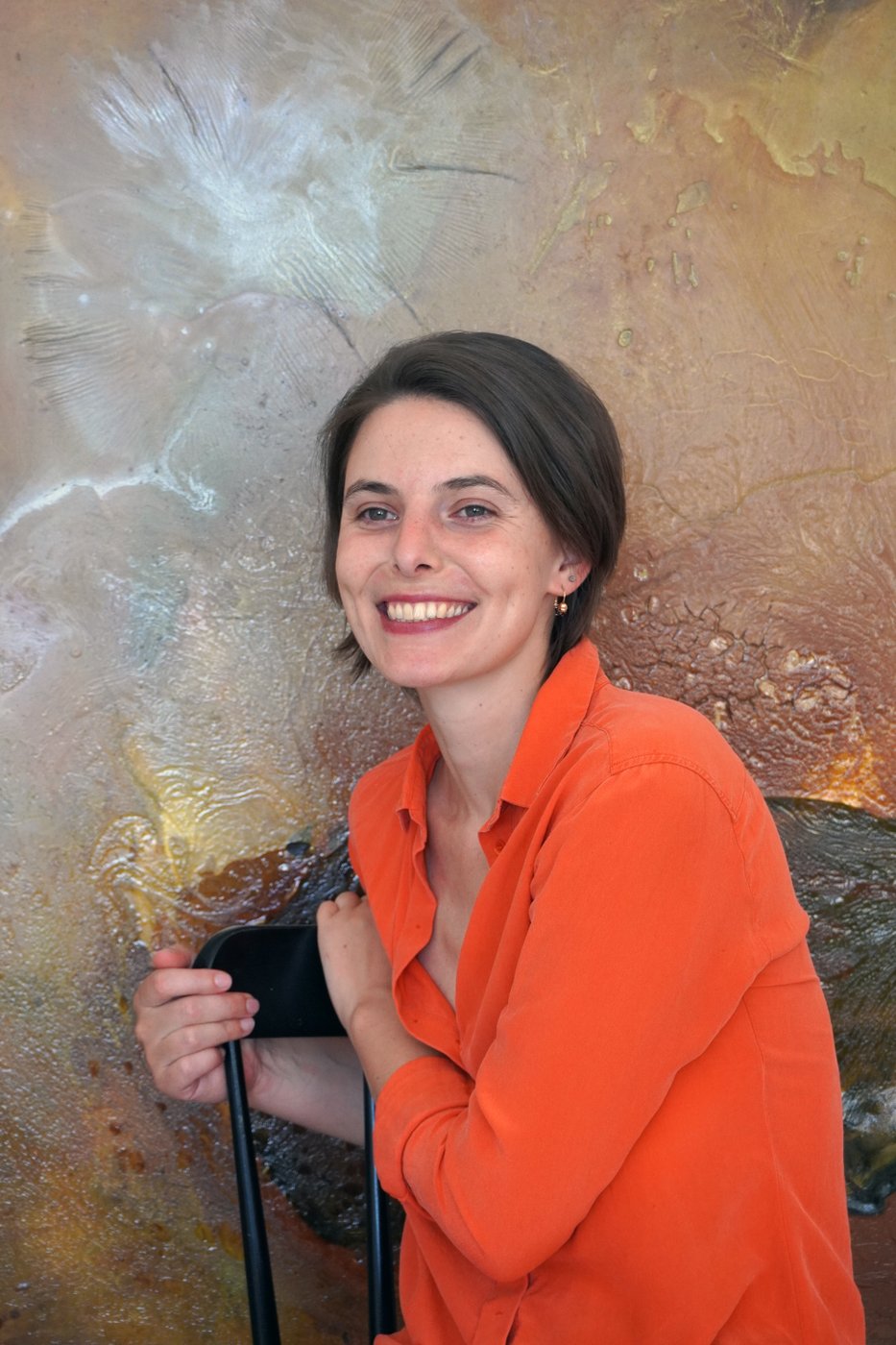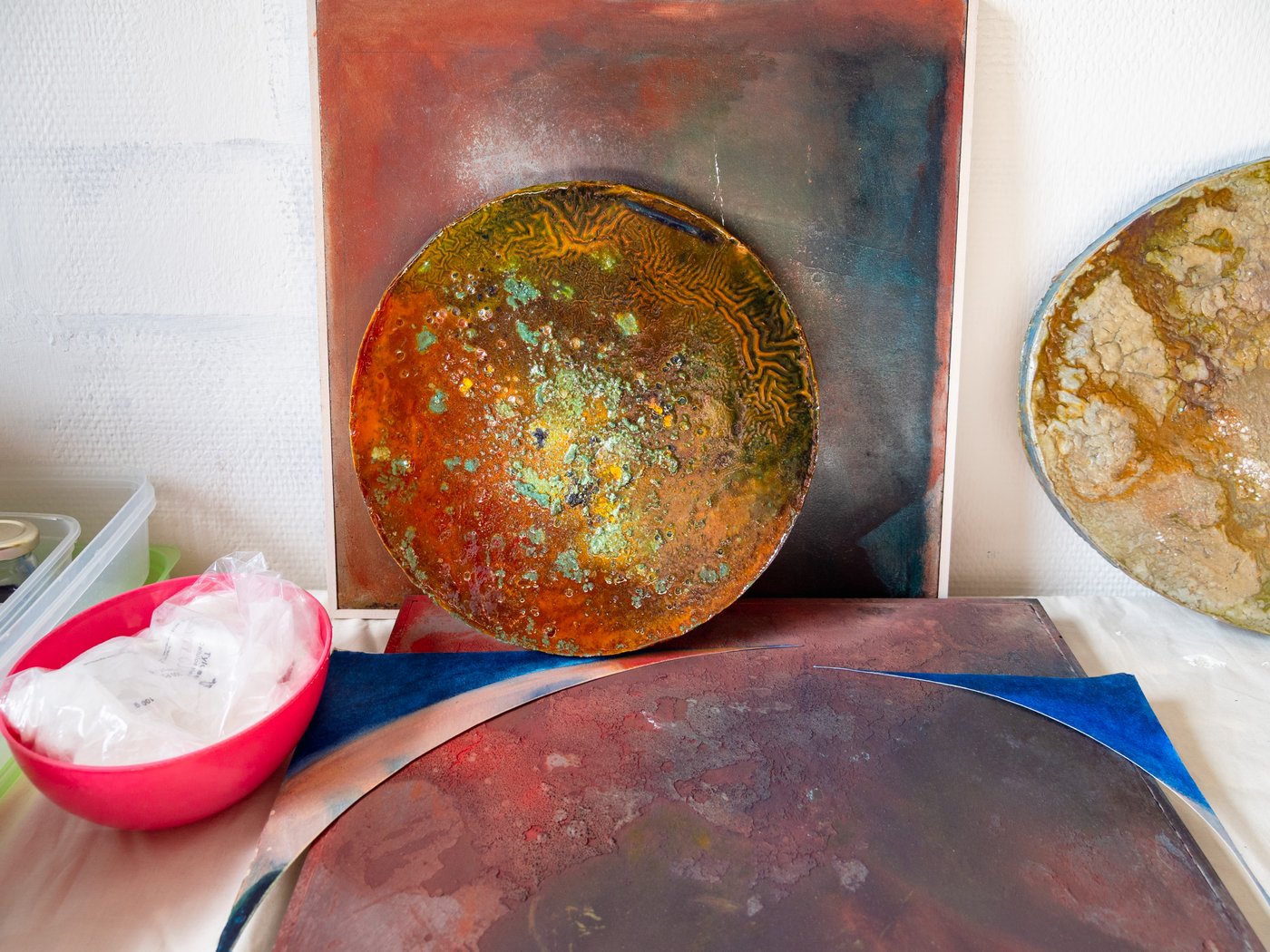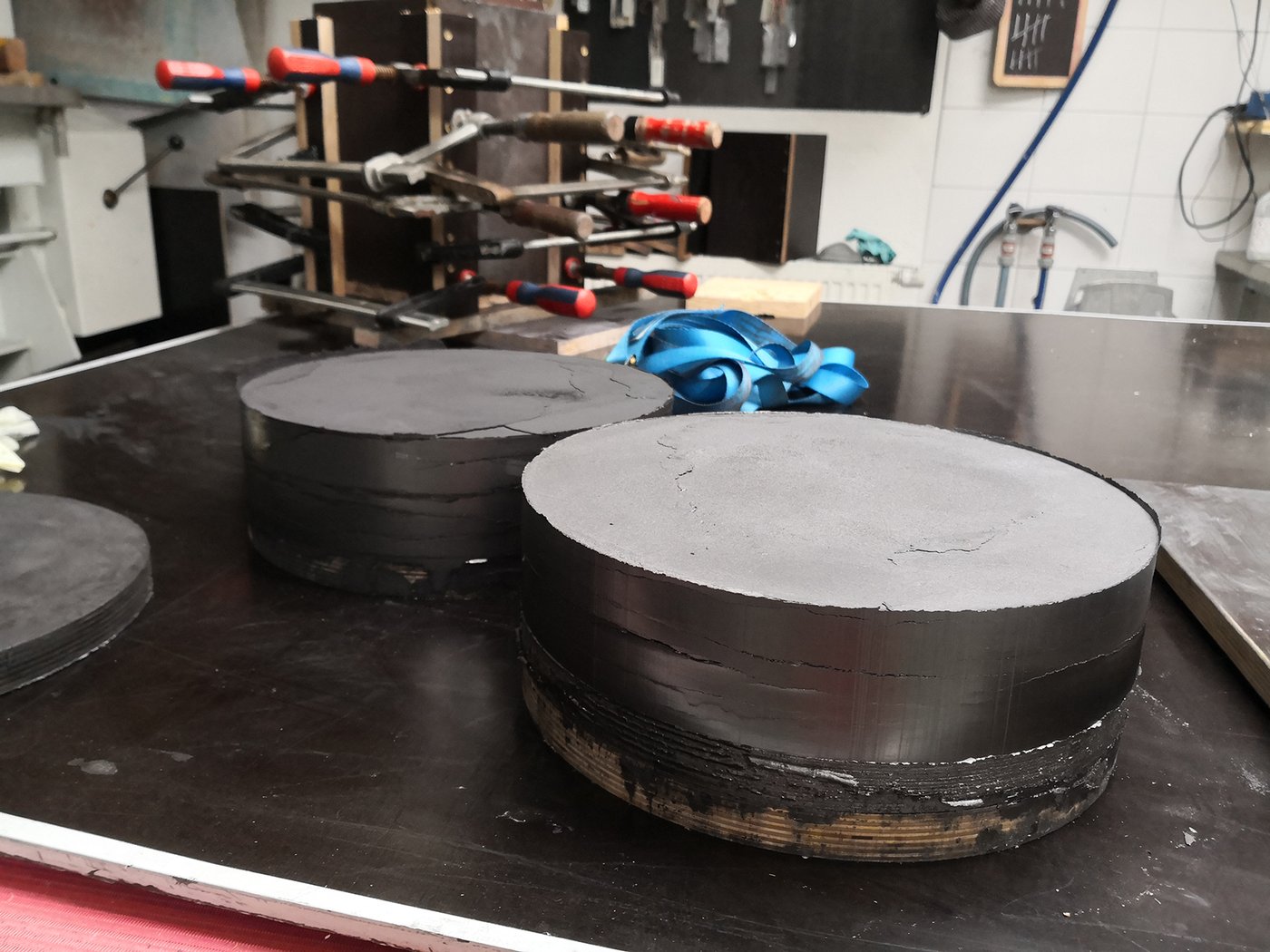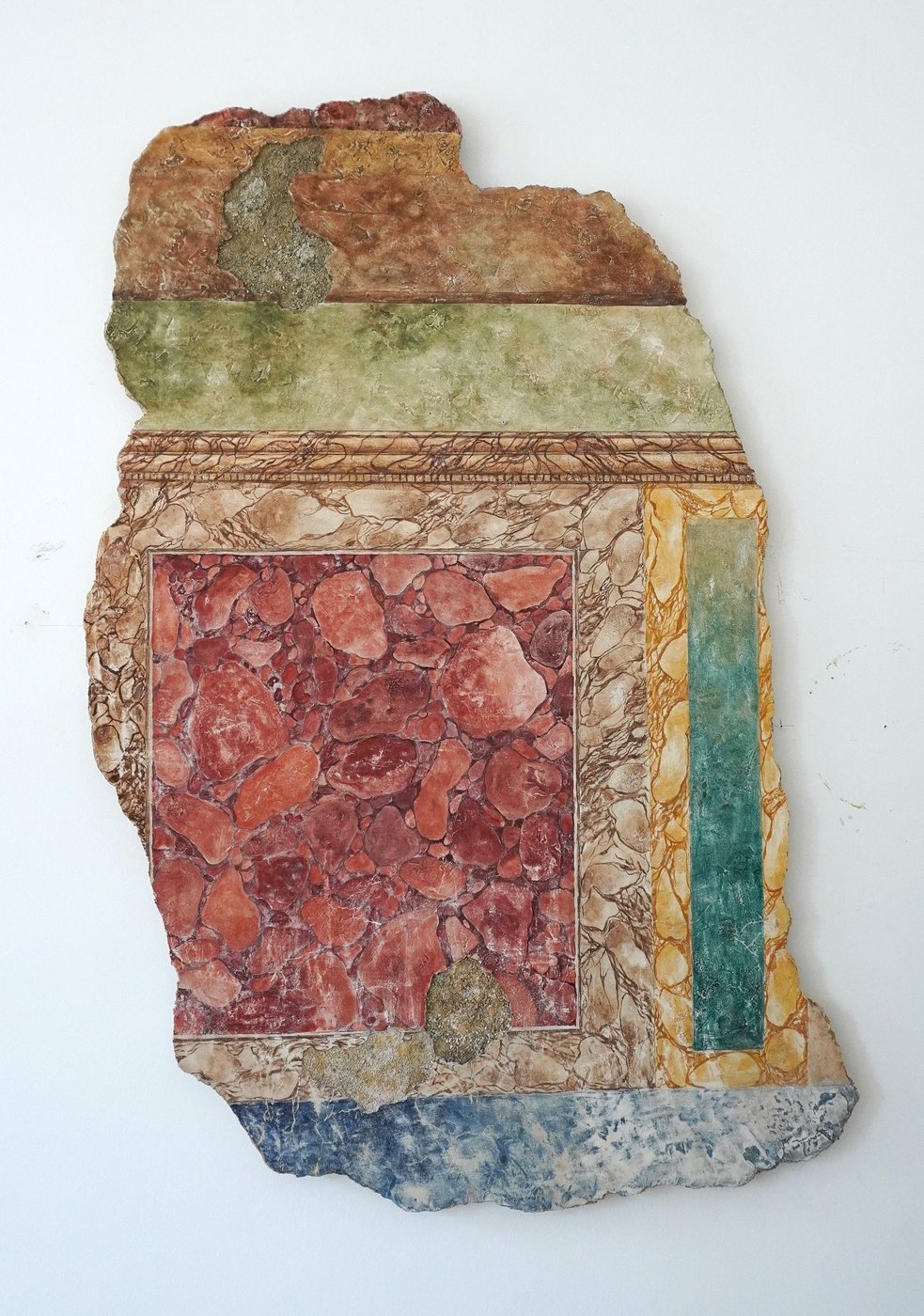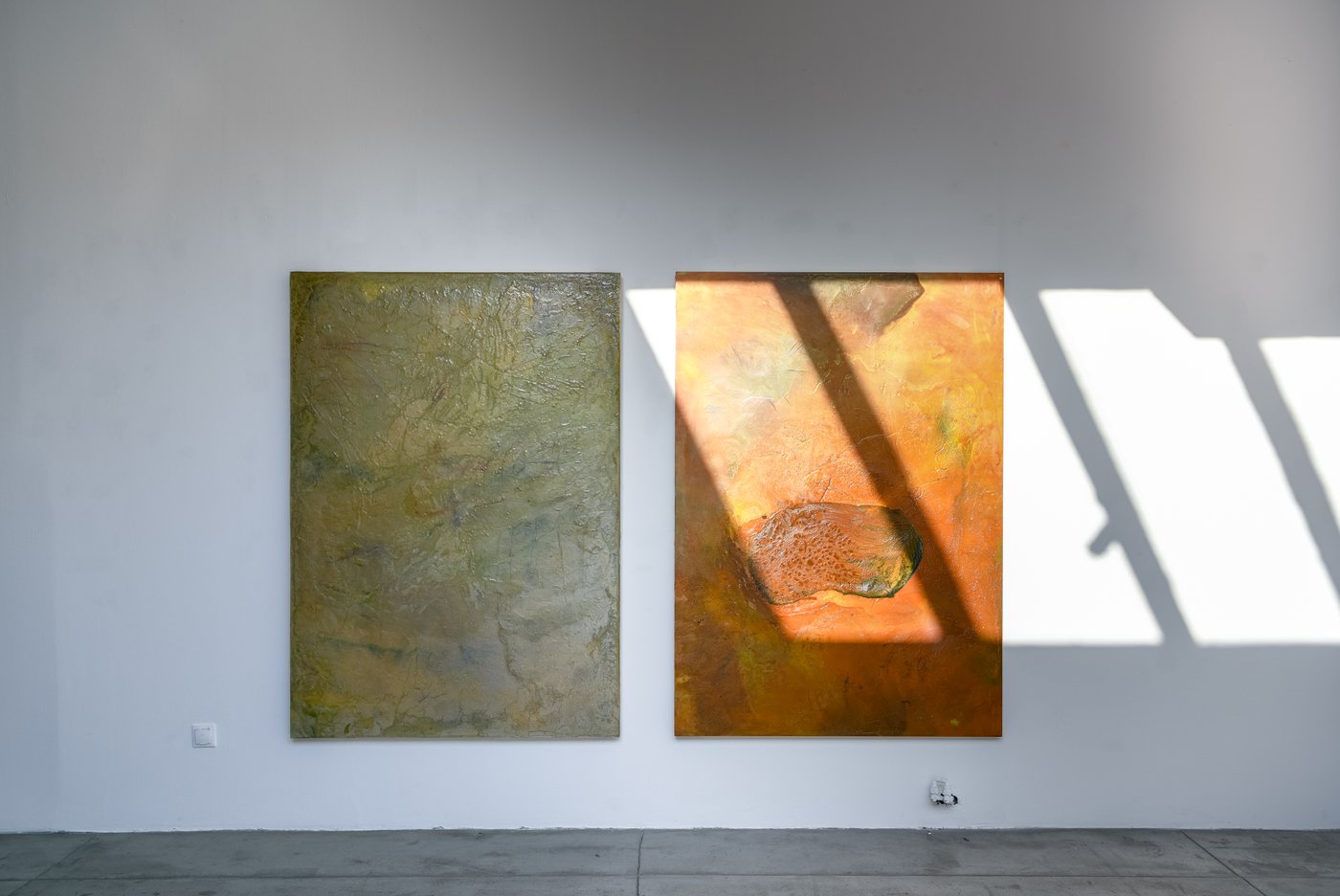Andrea Zabric
Wordrap and Studiovisit @ Creative Cluster, 10.3.2025
My preferred artistic medium is…
…definitely painting. Within this field, there are countless niches that I continuously discover and co-invent.
My art in three words…
I believe they change every day—depending on how the workday unfolds. Three words are just three words; I think what matters is how these three words relate to one another. And these relationships inevitably keep shifting.
A theme that runs through my work is…
…definitely painting materials and techniques. For my first solo exhibition in Vienna, which will take place in September at Spouse, and which I am really looking forward to, I will be exploring encaustic and fresco painting. Encaustic is a painting technique using wax and pigment—an ancient method that originated in Egypt. The first portraits found on wooden panels in the Western cultural sphere are the Fayum portraits, which were painted using the encaustic technique. It is evidently a technique that has remained stable over millennia and preserves pigments very well—the image itself is like a layer.
I draw inspiration for my art from…
…both history and stories. For example, last year I immersed myself in Pompeii and a figure from there, Afra Sperantia, a tavern owner in ancient Pompeii. When I read books or listen to the radio—these could be current political issues that concern me—they are never directly visible in my work but rather appear as traces. What one actually sees is the material. I also see pigments as protagonists with their own stories and logic, which cannot simply be dominated. One can communicate with them and build a relationship, but I don’t believe in the concept of authorship in the traditional sense. I have an issue with the word “create”; it has something too “divine” about it for me. Essentially, it is mainly work and craftsmanship—more than anything else, I would say.
Regarding the use of materials, it is important to me that…
…the history of the materials is also acknowledged. When I choose a pigment, I want to know how it came to us humans and how we use it. Much is color. Natural pigments were extracted in very specific ways. It is important to me to be aware of their economic history and provenance, what cultural connotations these pigments carry, where they are used, and who is involved in this chain before they finally reach me. On one hand, pigments are something very alchemical and valuable; on the other, they have become an industrial product.
My studio in the Creative Cluster is a place where…
…I work.
My greatest artistic achievement so far is…
…the moment when you are still engaged with something you are attached to and are already preparing something new. This constantly moves and shifts. Success is a rather difficult word for artists.
The transition from studying to becoming an independent artist means to me…
…freedom. The Academy provides protection and infrastructure. At the same time, there was always the feeling that someone was standing behind you and holding your hand, which can sometimes be a bit much. At some point, these ties have to be cut. I have always been fortunate never to have fallen into a black hole where I didn’t know what to do next. This results from many different aspects of artistic work: being active, exchanging ideas, and networking so that a community emerges. That also means freedom to me.
The feedback that has influenced me the most…
…is still the conversations I have with my colleagues. I value that greatly. I have learned the most from my fellow students and colleagues. I regularly meet with other painters in an informal circle where we exchange ideas.
If I could give aspiring artists one piece of advice, it would be…
…just keep going—that is very important. Really keep going, be disciplined, and create your own rhythm. The idea of the artist as a bohemian is still very much alive until you realize: no, actually, it is work.
An artistic idea or project that I am excited to realize…
There are many things I am looking forward to right now. At the moment, I am designing a cover for a vinyl record using screen-printing, which I haven’t done in a long time. During my studies, I was obsessed with printing posters in screen print for our Academy exhibitions. This is a small project compared to a solo exhibition, but I am very excited about it. My painting practice involves spending a lot of time alone in the studio, which I appreciate. But in such “applied” projects, I engage more in discussions and reflect on the shared process.
